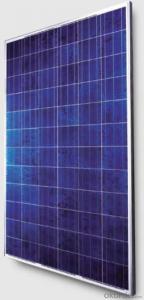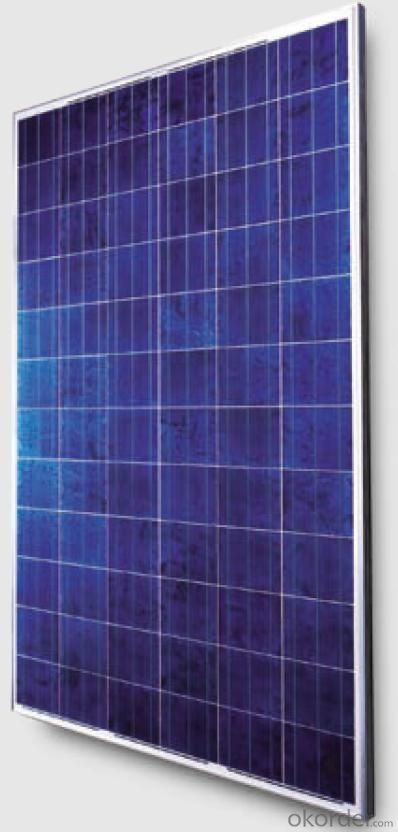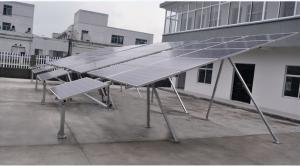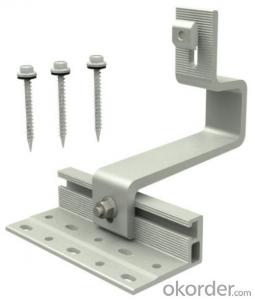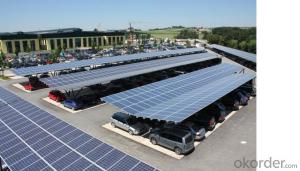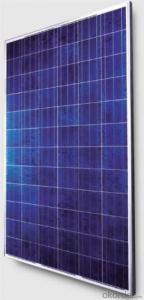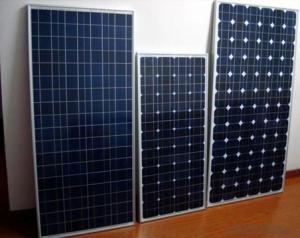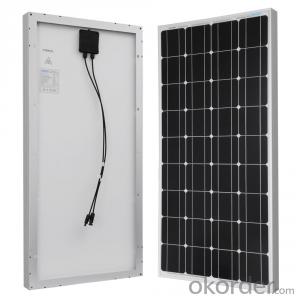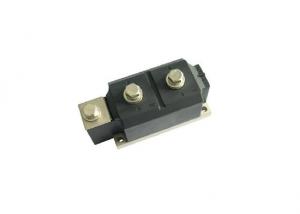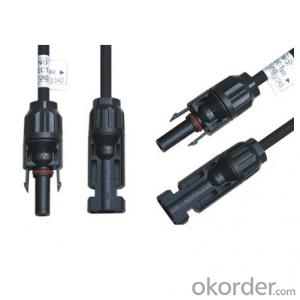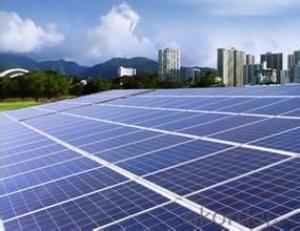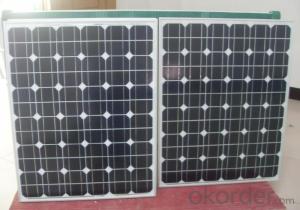Solar Vacuum Tube PV Modules Made in China for Overseas Market
- Loading Port:
- Tianjin
- Payment Terms:
- TT OR LC
- Min Order Qty:
- 1 pallet
- Supply Capability:
- 100000000 pallet/month
OKorder Service Pledge
OKorder Financial Service
You Might Also Like
Solar panel refers either to a photovoltaic (PV) module, a solar hot water panel, or to a set of solar photovoltaic modules electrically connected and mounted on a supporting structure. A PV module is a packaged, connected assembly of solar cells. Solar panels can be used as a component of a larger photovoltaic system to generate and supply electricity in commercial and residential applications. Each module is rated by its DC output power under standard test conditions, and typically ranges from 100 to 320 watts. The efficiency of a module determines the area of a module given the same rated output – an 8% efficient 230 watt module will have twice the area of a 16% efficient 230 watt module. There are a few solar panels available that are exceeding 19% efficiency. A single solar module can produce only a limited amount of power; most installations contain multiple modules. A photovoltaic system typically includes a panel or an array of solar modules, an inverter, and sometimes a battery and/or solar tracker and interconnection wiring.
Solar modules use light energy (photons) from the sun to generate electricity through the photovoltaic effect. The majority of modules use wafer-based crystalline silicon cells or thin-film cells based on cadmium telluride or silicon. The structural (load carrying) member of a module can either be the top layer or the back layer. Cells must also be protected from mechanical damage and moisture. Most solar modules are rigid, but semi-flexible ones are available, based on thin-film cells.
Electrical connections are made in series to achieve a desired output voltage and/or in parallel to provide a desired current capability. The conducting wires that take the current off the modules may contain silver, copper or other non-magnetic conductive transition metals. The cells must be connected electrically to one another and to the rest of the system. Externally, popular terrestrial usage photovoltaic modules use MC3 (older) or MC4 connectors to facilitate easy weatherproof connections to the rest of the system.
Bypass diodes may be incorporated or used externally, in case of partial module shading, to maximize the output of module sections still illuminated.
Some recent solar module designs include concentrators in which light is focused by lenses or mirrors onto an array of smaller cells. This enables the use of cells with a high cost per unit area (such as gallium arsenide) in a cost-effective way.
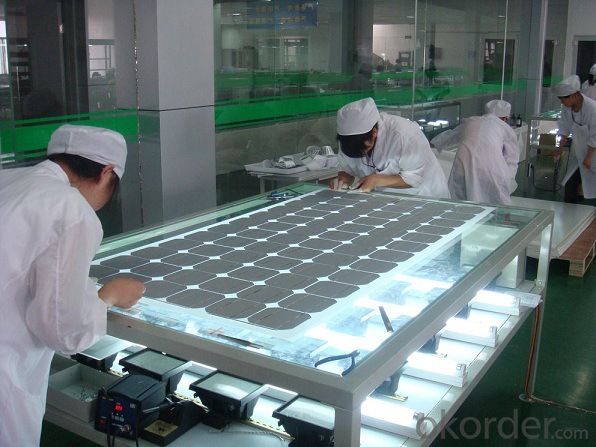
Specifications:
solar panels from 5W--300W, made of TAIWAN MOTECH brand cells,with CO in TAIWAN,Mono and Poly with VDE,IEC,CSA,UL,CE,ISO.
We import solar cells from Taiwan Motech brand, with this CO in taiwan and our CSA certification,we can still sell goods to Anti-dumping areas like USA. Our main products are solar panels, off grid and on grid solar home systems , solar street lighting systems, solar water heating system,solar pump,solar attic fan, solar DC LED lights and solar DC refrigerators.
Certificates : ISO, CE, VDE IEC, MCS, CSA-UL, CEC.
Delivery time: sample 10days, order 25-30days.
Sample: charged.
Payment term: T/T 30% as deposit, 70% before shipment. Or irrevocable L/C at sight.
Trade term: FOB Shenzhen or CIF destination seaport or Airport.
Characteristics:
I.Solar Cell : High efficiency crystalline solar cell. Even if under the weak light, the solar module can produce maximum power output.
II.Tempered glass (toughened glass): Anti-reflecting coating and high transmission rate glass increase the power output and mechanical strength of solar module.
III.EVA and TPT: Using high quality EVA and TPT to prevent destroying and water.
IV.AI frame: Without screw, corner connection. 6 holes on the frame can be installed easily.
V.Junction box: Multi function junction box with water proof.
VI.Long lifetime: ≥25 years; Less power decrease.
VII.Good performance of preventing from atrocious weather such as wind and hails.
VIII.Resisting moisture and etching effectively, not effected by geology.
IX.The certificate issued by international authority: UL, TUV, IEC, VDE, CE.
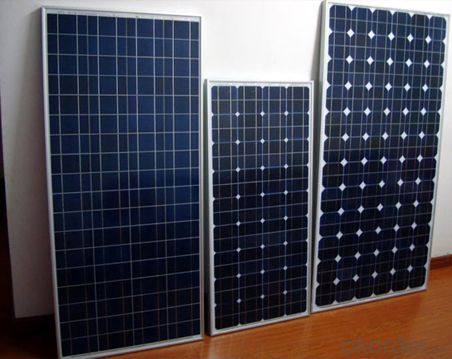
Quality and Safety
1. Rigorous quality control meets the highest international standards.
2. High-transmissivity low-iron tempered glass, strong aluminium frame.
3. Using UV-resistant silicon.
4. IS09001/14001/CE/TUV/UL
Warranties
1. 10 years limited product warranty
2. 15 years at 90% of the minimal rated power output
3. 25 years at 80% of the minimal rated power output
Technical date :
ITEM NO.: | Poly 156*156 cell ,60pcs . Power range from 230Wp-260Wp | ||||||
Maximum Power(W) | 230 | 235 | 240 | 245 | 250 | 255 | 260 |
Optimum Power Voltage(Vmp) | 29.4 | 29.5 | 29.7 | 30.1 | 30.3 | 30.5 | 30.7 |
Optimum Operatige Current(Imp) | 7.83 | 7.97 | 8.08 | 8.14 | 8.25 | 8.37 | 8.48 |
Open Circuit Voltage(Voc) | 36.7 | 36.8 | 36.9 | 37.1 | 37.3 | 37.5 | 37.7 |
Short Circuit Current(Isc) | 8.52 | 8.59 | 8.62 | 8.65 | 8.69 | 8.73 | 8.78 |
Solar Cell: | 156*156 Poly | ||||||
Number of Cell(pcs) | 6*10 | ||||||
Name of Solar Cells | Polycrystalline Cell | ||||||
Size of Module(mm) | 1650*992*40/45/50 | ||||||
Cable & Connector Type | Pass the TUV Certificate | ||||||
Frame(Material Corners,etc.) | Aluminium-alloy | ||||||
Back sheet | TPT | ||||||
Weight Per Piece(KG) | 19.5KG | ||||||
FF (%) | 70-76% | ||||||
Junction Box Type | Pass the TUV Certificate | ||||||
Tolerance Wattage(e.g.+/-5%) | ±3%, or 0-3% | ||||||
Front Glass Thickness(mm) | 3.2 | ||||||
Temperature Coefficients of Isc(%) | +0.04 | ||||||
Temperature Coefficients of Voc(%) | -0.38 | ||||||
Temperature Coefficients of Pm(%) | -0.47 | ||||||
Temperature Coefficients of Im(%) | +0.04 | ||||||
Temperature Coefficients of Vm(%) | -0.38 | ||||||
Temperature Range | -40°C to +85°C | ||||||
Surface Maximum Load Capacity | 5400Pa | ||||||
Allowable Hail Load | 23m/s ,7.53g | ||||||
Bypass Diode Rating(A) | 12 | ||||||
Warranty | 90% of 10 years, 80% of 25 years. | ||||||
Standard Test Conditions | AM1.5 1000W/ 25 +/-2°C | ||||||
Packing | carton or pallet | ||||||
1*20' | 14 Pallets / 316pcs | ||||||
1*40'STD | 25 Pallets / 700pcs | ||||||
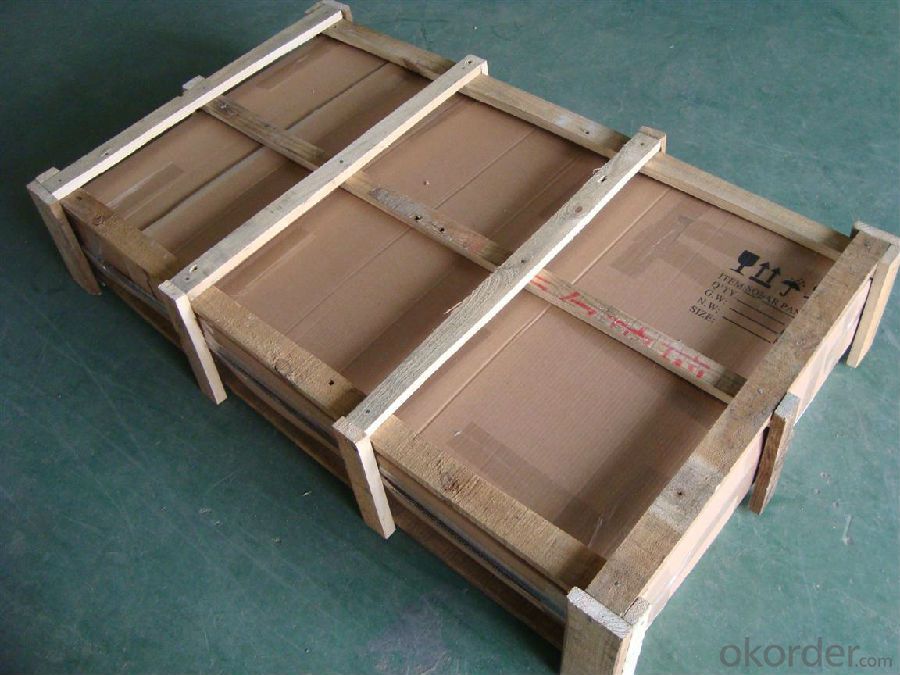
FAQ:
I..Will you focus on the safety of the goods during transportation?
Yes, Safety of the cargo is the primary element that we would consider on transportation.
II..How would guarantee the quality will meet the requirements of your clients?
Before shipment, we will have inspection for each batch of goods.
III..What certificates do you have?
IEC,UL,TUV,CSA,etc.
IV..Can you do OEM according to clients’ requirements?
Yes, we have our own brand while we can provide OEM service.
- Q: Can solar vacuum tubes be used for solar-powered drying of medicinal herbs?
- Yes, solar vacuum tubes can be used for solar-powered drying of medicinal herbs. Solar vacuum tubes are efficient in harnessing solar energy and can provide the heat required for drying herbs. The tubes can trap and retain heat, creating a controlled environment that promotes optimal drying conditions. This method is sustainable, cost-effective, and ensures that the medicinal herbs retain their potency and quality throughout the drying process.
- Q: Are solar vacuum tubes suitable for use in areas with frequent power outages?
- Yes, solar vacuum tubes are suitable for use in areas with frequent power outages. Since they rely on sunlight to generate heat, they can provide hot water or space heating even when the power is out. This makes them a reliable and sustainable option for areas prone to power disruptions.
- Q: How do solar vacuum tubes handle condensation or frost?
- Solar vacuum tubes are designed to minimize the impact of condensation or frost. The vacuum insulation layer surrounding the tubes prevents moisture from entering and condensing inside the tubes. Additionally, the tubes are typically made of high-quality materials that have low heat loss and can resist frost formation. Overall, solar vacuum tubes effectively handle condensation or frost, ensuring optimal performance even in cold climates.
- Q: Can solar vacuum tubes be used in areas with limited sunlight?
- Solar vacuum tubes can still be used in areas with limited sunlight, but their efficiency and performance may be reduced compared to areas with abundant sunlight. These tubes can still capture and convert the available sunlight into usable energy, but their output might be lower in regions with limited sunlight. It is important to consider the local climate and sunlight conditions when deciding to use solar vacuum tubes in such areas.
- Q: Are solar vacuum tubes suitable for heating prisons and correctional facilities?
- Yes, solar vacuum tubes can be a suitable option for heating prisons and correctional facilities. Solar vacuum tubes are highly efficient in converting sunlight into heat, and they can provide consistent and reliable heating throughout the year. Additionally, using solar energy as a heating source can significantly reduce operational costs and dependence on fossil fuels, making it a sustainable and environmentally friendly choice for correctional facilities.
- Q: Can solar vacuum tubes be used for oil or gas extraction processes?
- No, solar vacuum tubes cannot be used for oil or gas extraction processes. They are primarily designed to harness solar energy for heating water or space and are not suitable for the extraction of fossil fuels.
- Q: Are solar vacuum tubes suitable for use in schools and universities?
- Yes, solar vacuum tubes are suitable for use in schools and universities. They are a reliable and efficient source of renewable energy, which can help reduce the carbon footprint and educate students about sustainable practices. Additionally, solar vacuum tubes can be integrated into the curriculum to teach students about solar energy technology and its benefits, making them a valuable addition to educational institutions.
- Q: How do solar vacuum tubes compare to solar-powered water pumps?
- Solar vacuum tubes and solar-powered water pumps serve different purposes in harnessing solar energy. Solar vacuum tubes are used for heating water or generating electricity by converting sunlight into thermal energy. They are efficient in capturing solar radiation and can be used for various applications such as heating homes, pools, or providing hot water for domestic use. On the other hand, solar-powered water pumps are designed specifically for pumping water using solar energy. They are commonly used in irrigation systems, agricultural practices, or providing clean drinking water in remote areas. These pumps are effective in harnessing solar power to facilitate water movement or distribution. So, while solar vacuum tubes focus on heat generation or electricity production, solar-powered water pumps prioritize water pumping. Both technologies are valuable in utilizing solar energy but for different purposes.
- Q: Can solar vacuum tubes be integrated into existing hot water systems?
- Yes, solar vacuum tubes can be integrated into existing hot water systems. They can be connected to the existing water storage tanks or used as a pre-heater before the water enters the existing system. This integration allows for harnessing solar energy to supplement or replace traditional heating methods, making it a cost-effective and sustainable solution for hot water production.
- Q: Home solar energyThe dirt in the pipe -- alkaliHow to clean up?I hope my friends can help me solve this problem..Thank you first..
- Take off the vacuum tube: first from the solar energy side of the first tube removed, because it is not easy to damage the vacuum tube. (1) holding the middle and upper part of the vacuum tube and the middle and the lower parts respectively. (2) to move the vacuum tube from the base to the top while rotating. (3) the lower end of the vacuum tube is lifted, the side is rotated, and the outer side is pulled out (it is difficult to rotate, and the utility model is used to suck the detergent into the rubber ring connection between the vacuum tube and the barrel body. 4, the vacuum tube one by one to wash, and finally installed back in situ.
Send your message to us
Solar Vacuum Tube PV Modules Made in China for Overseas Market
- Loading Port:
- Tianjin
- Payment Terms:
- TT OR LC
- Min Order Qty:
- 1 pallet
- Supply Capability:
- 100000000 pallet/month
OKorder Service Pledge
OKorder Financial Service
Similar products
Hot products
Hot Searches
Related keywords
